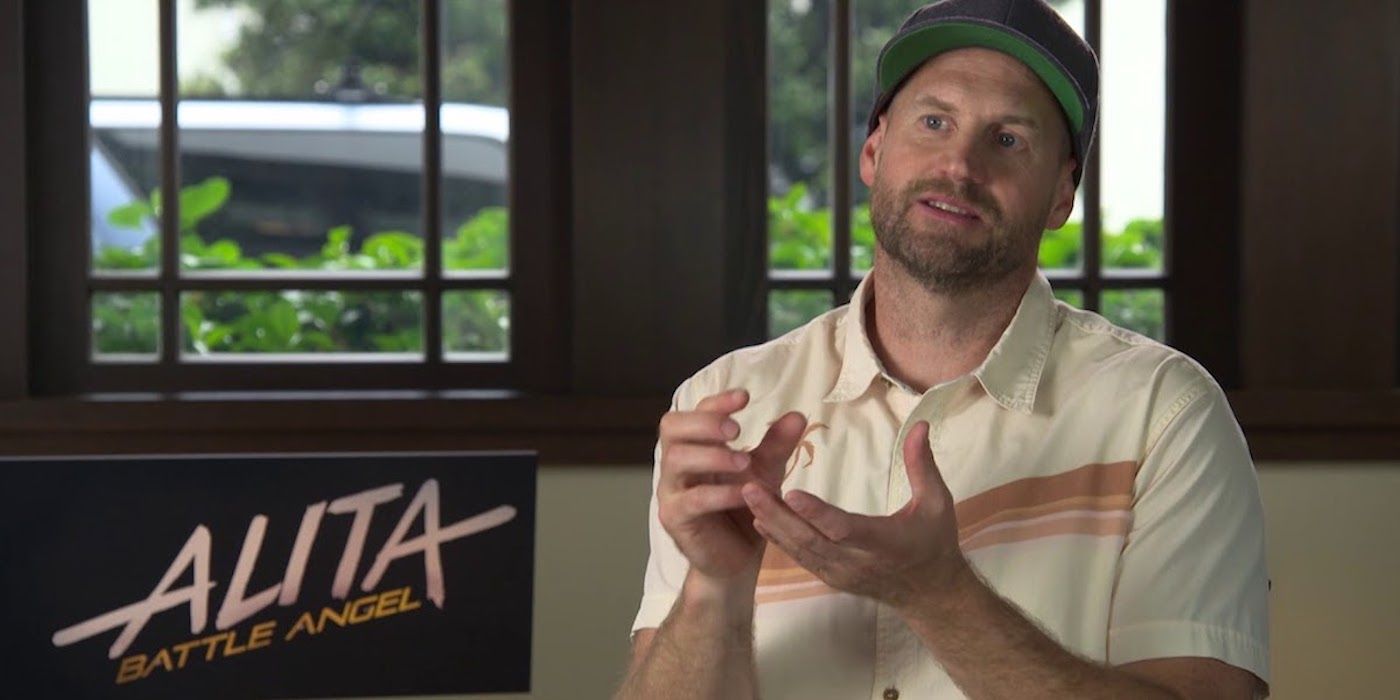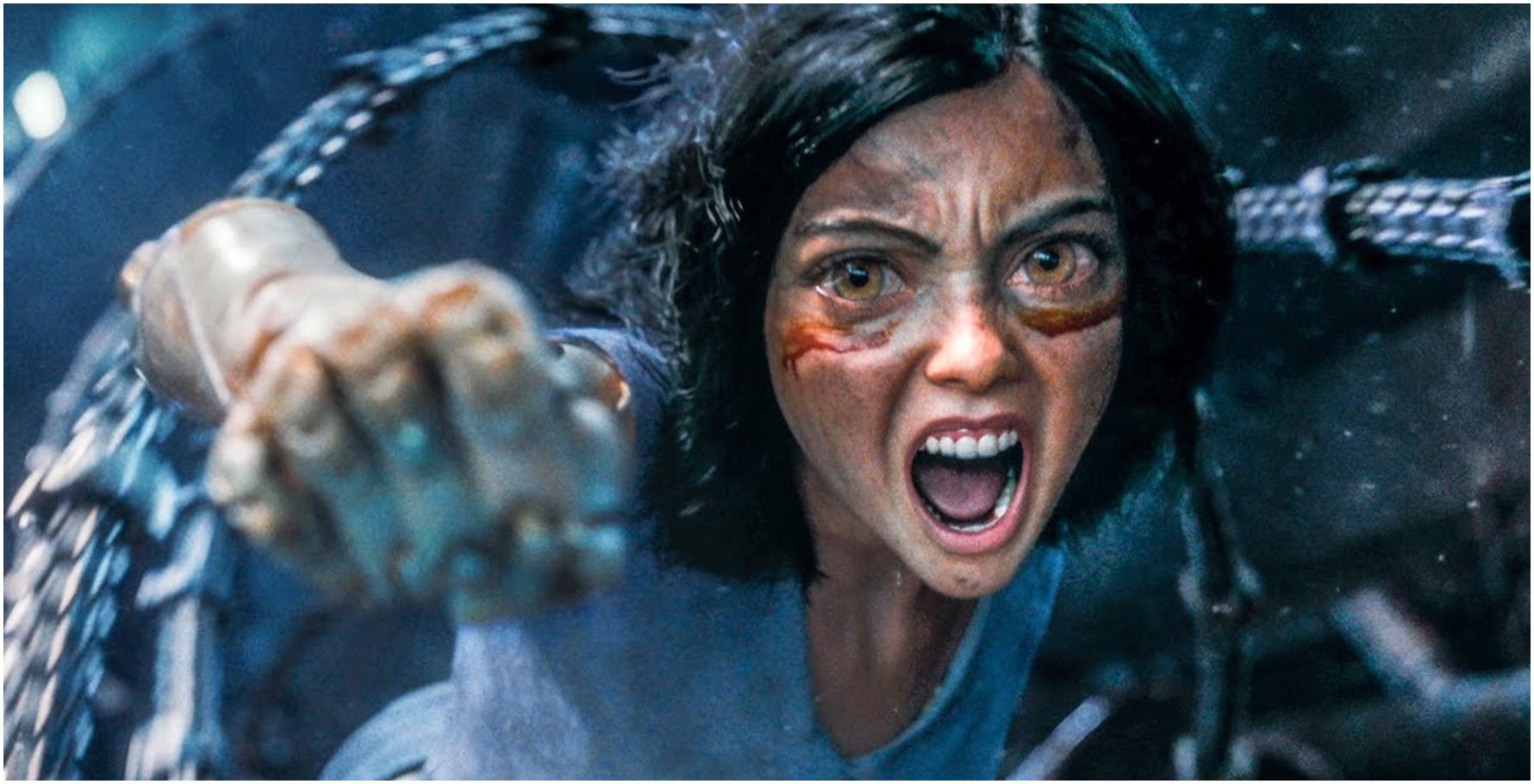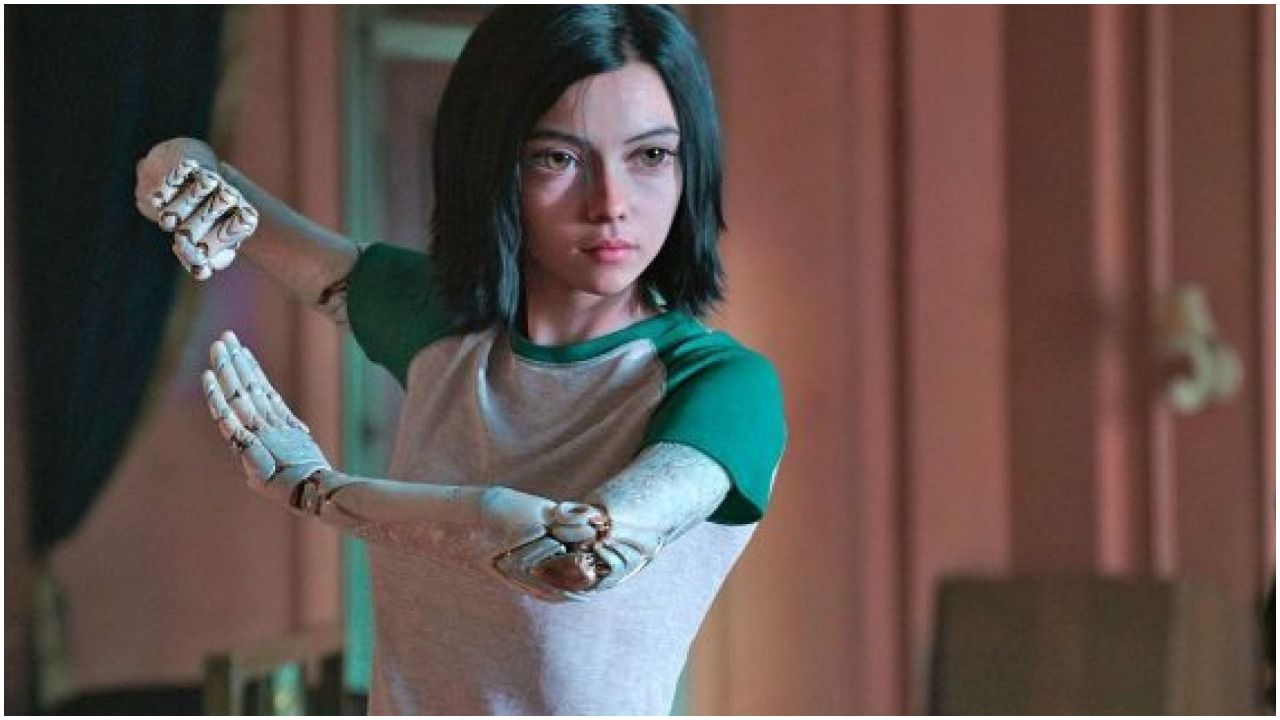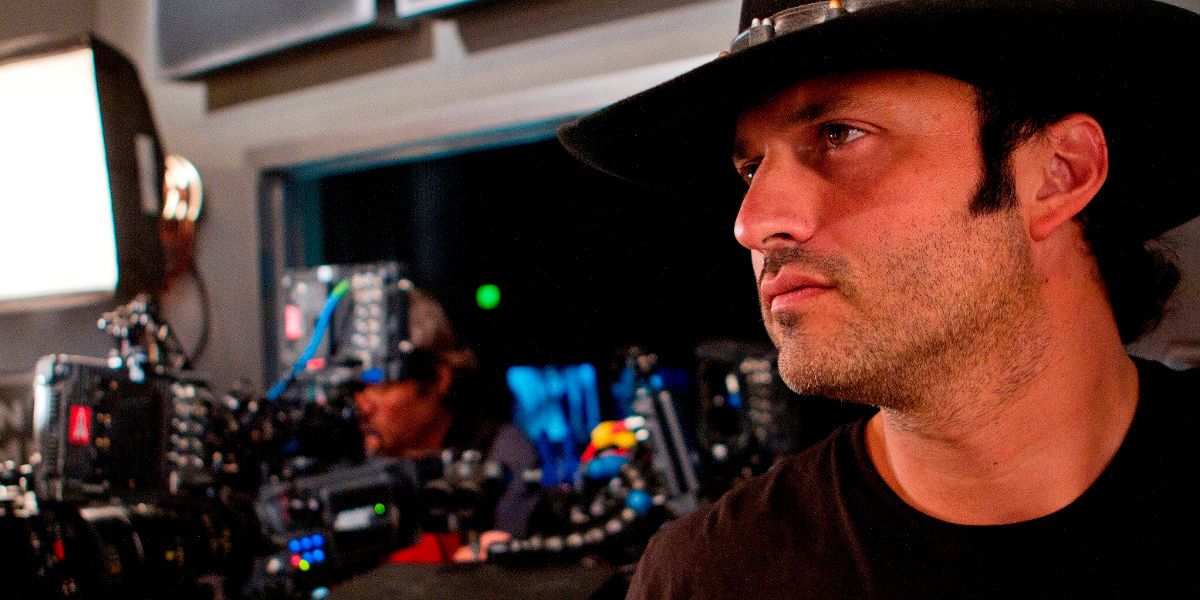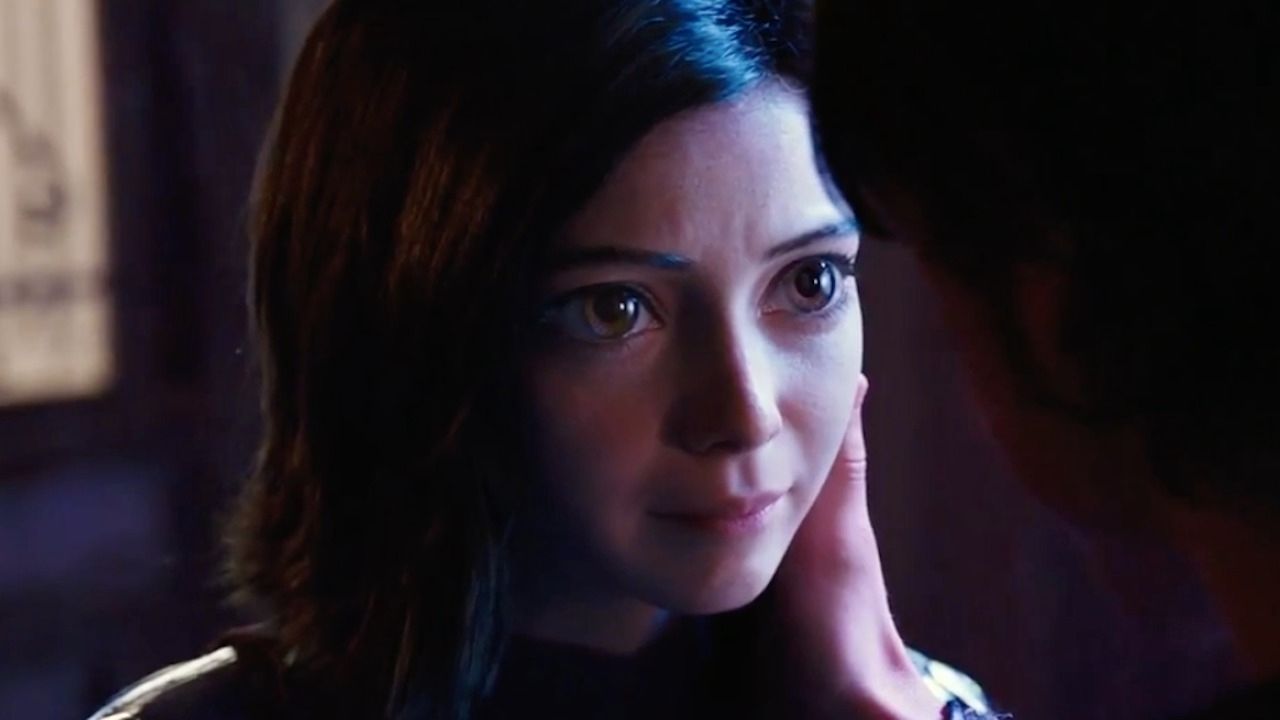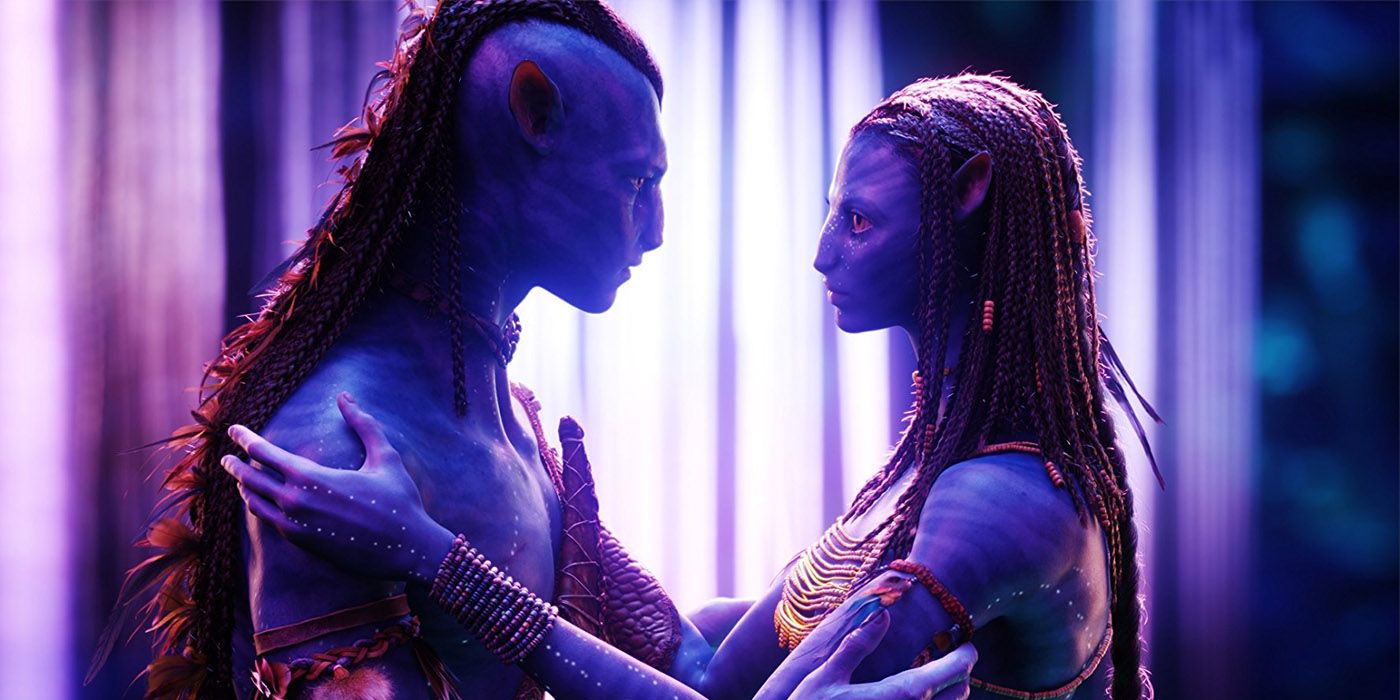After over a decade of development, Alita: Battle Angel finally hit theaters in February 2019. Based on the popular Japanese manga, the film was the result of a collaboration between James Cameron and director Robert Rodriguez. Set in a rustic futuristic world inhabited by cyborg warriors and cyberpunk corporations, Alita: Battle Angel earned critical acclaim for its unprecedented visuals, heartfelt story, and strong acting from Rosa Salazar, who delivers a fully motion-captured performance as the computer-generated title character.
While promoting the home video release of Alita: Battle Angel, Animation Supervisor Mike Cozens spoke to Screen Rant about his work on the film, as well as his career in the ever-expanding field of CGI effects. In addition to Alita, Cozens has also worked on Peter Jackson's The Hobbit trilogy, as well as James Cameron's 2009 epic, Avatar. Speaking of Avatar, Cozens is also hard at work on the upcoming sequels to the Pandora-set opus, and promises 2021's Avatar 2 will be as much a game-changer as the original, though he unfortunately could not share why this will inevitably be the case.
First of all, congratulations on Alita: Battle Angel. It is a fantastic movie, packed with wall-to-wall imagination. I loved it.
Thank you, we are big fans, here, as well! It was a fun project to work on, and it was really interesting to be involved in it from the very early stages with Robert (Rodriguez), in pre-production, on the shoot, and then into post. It was really excellent. It's an interesting film!
The Hollywood legend is that, many years ago, James Cameron had to choose between Alita and Avatar. I know that you worked on Avatar, but were you privy to any of that conversation before he chose Avatar?
I was only aware of the Manga, early on. I wasn't aware of Jim purchasing the rights and that whole history of how he found the story through Guillermo Del Toro and wrote a script... He had a really long script, but went on to make Avatar, and Robert met with Jim... Jim asked Robert to look at the script, and Robert edited that script. That fueled the fire for the making of this film. All that history is something that I found out later on, as we began work on pre-production.
I love those stories, those Hollywood myths. Like, what would the world be like if Avatar came out this year, and Alita had changed cinema history back in 2009, right?
Totally. Yeah.
I think, in 2019, we take CGI for granted. I remember reading a review of War of the Worlds way back in 2005, and the line was, "the CGI speaks for itself, though it really shouldn't." Even back then, everything that goes into CGI, the average viewer is not going to notice, or they'll take it for granted. In terms of visual effects, from your point of view, what makes Alita a game-changer?
I think there's a couple of things. To your earlier point, we live in a world now, where we have films that have a lot of visual effects in them. We're at a point where that doesn't have to snap you out of the film, if it's done right. Like, this film, where so much of it is built on computer graphics technology, but it allows audiences to be sucked into the story without being snapped away. Even in the creation process for Robert, we really wanted to not have him be constrained by the thought of working on a heavy visual effects movie like this. We were very aware of the visual effects footprint on set, and in not restraining him in what the visual character could do. You know, like, there weren't constraints on interactions between the digital characters and the live action characters.
That kiss!
Yeah, exactly! And all that frees the director to, again, just focus on the story and the characters, and filming those characters to tell the story. Hopefully, in the end, the audience is swept up in story and characters. Yes, there's a huge amount of visual effects work in the film, but that's not the thing the audience is focused on. It's the story.
Even if it's the thing that pulls them in initially, out of curiosity, "can they pull this off?" But they aren't thinking about it by the end.
Yes, exactly.
So, you've worked with Robert Rodriguez since Spy Kids 2.
That's right!
How would you describe your collaboration with him, and his approach to VFX? He has a reputation for his garage band filmmaking style.
I have huge amounts of respect for Robert. He is an incredibly talented individual who remains one of the most down-to-Earth people working at that level who I have ever met. The neat thing about him is that he understands so much about all the different pieces that go into creating a film. As you know, he can do all those roles himself. There's a really interesting... You can talk technical, you can talk creative with him. It's like riffing with a really good friend when you're working on a project with him. He understands exactly what you're talking about, and he knows the challenges that need to be overcome in any one moment, and he collaborates to get it done.
I remember reading about how he put together El Mariachi, doing stuff that would require a multi-cam setup, and just telling everyone to freeze and moving the camera to a new angle to get the shot. That kind of filmmaking is just wild. I imagine, getting to play in a $200 million sandbox must have been... I can't even imagine.
He was like a kid in a candy store, you know? He's just really interested in all aspects of storytelling and filmmaking. He has no problem rolling up his sleeves and getting right in the middle of it. He's a really serious individual who brings a lot of art and energy to every part of the film's direction. It's just a really good and positive energy to be working with.
I don't know if it works like this for FX artists, but going through your career, is there a particular shot in any movie that you're exceptionally proud of, that you're like, "this shot is my legacy." This is the cover photo on your resume, this is your masterpiece. Does it work like that for your field?
(Laughs) That's a really good question! Huh... I guess there's a couple of moments... That's something I haven't thought about for a while, because we're always onto the next thing. There's always some new project, a new challenge. But I guess the original Avatar film had a bunch of those moments for me. Working with Jim and Richie (Richard Baneham) on that film, not only pushing my animation abilities, but it also brought me into the world of filmmaking and creating shots and storytelling. Quaritch in the amp-suit, that fight, fighting Jake, and later, Neytiri on the back of that beast, that was really, again... Working through a whole sequence of shots and developing action, working with that team... It was a really interesting and eye-opening part of my growth. Likewise, collaborating with Peter (Jackson) on the second Hobbit films for the end with Smaug in Erebor. That was another big moment. Again, working with someone who is an incredibly smart storyteller on shot construction and character development at any moment. Again, I think, as artists, we can tend to focus on the shot at hand, this small piece. But being able to get up and have a bird's eye view on the character, on the arc of the character... Every shot on a film is important. But we ask, why is this shot in the film? What are we trying to get out of it in any one moment, and the relationship with all the other pieces that are being put together is a really critical part of the filmmaking process, and is something that has evolved for me, over the course of working with filmmakers like that, who have vision.
I know FX houses are under intense deadlines and have to make movie magic while hamstrung by budget and time. We've been hearing for a while now that there's not enough FX houses and perhaps even not enough CGI artists, but there are more and more movies which require more and more CGI. Is the industry just adapting to the increased demand of blockbusters? How do you balance the supply with the demand?
That's a great question. I know there's tons of schools out there, but there's always a demand for good artists. But when I say good artists, not only do I mean people with strong creative ability, or strong technical abilities, but people that are collaborative, energized, passionate, and a pleasure to work with. I think, as you work longer in any industry, you're always on the hunt for talent. We have a really great team here, but we're always looking for new people. It's not totally easy to find somebody who fits all those things, but I think there are a lot of artists out there, but there's never been as much visual effects being created as there are during this very moment...
And that's just in the Avatar movies.
(Laughs) That's right! Yeah, we've got a few projects on deck here, so... I think we're gonna be busy for a little while.
Okay, so I know you probably cannot tell me anything about Avatar, but... On that original film, you guys were inventing technology that we take for granted today. All of that motion capture technology, 3D, so many other technologies, maybe they had been done before, but not to the extent, and to the level of quality as on Avatar. Do you think, years from now, we're going to look back at the first Avatar sequel and we're going to be taking for granted technologies that I, Zak from Screen Rant, in 2019, can't even imagine today, but it's going to be shorthand after the movie comes out?
...Yes.
Thank you.
Definitely yes. We'll have this conversation in a couple of years. (laughs)
Alita: Battle Angel is out now on Blu ray, Digial, and On Demand.

